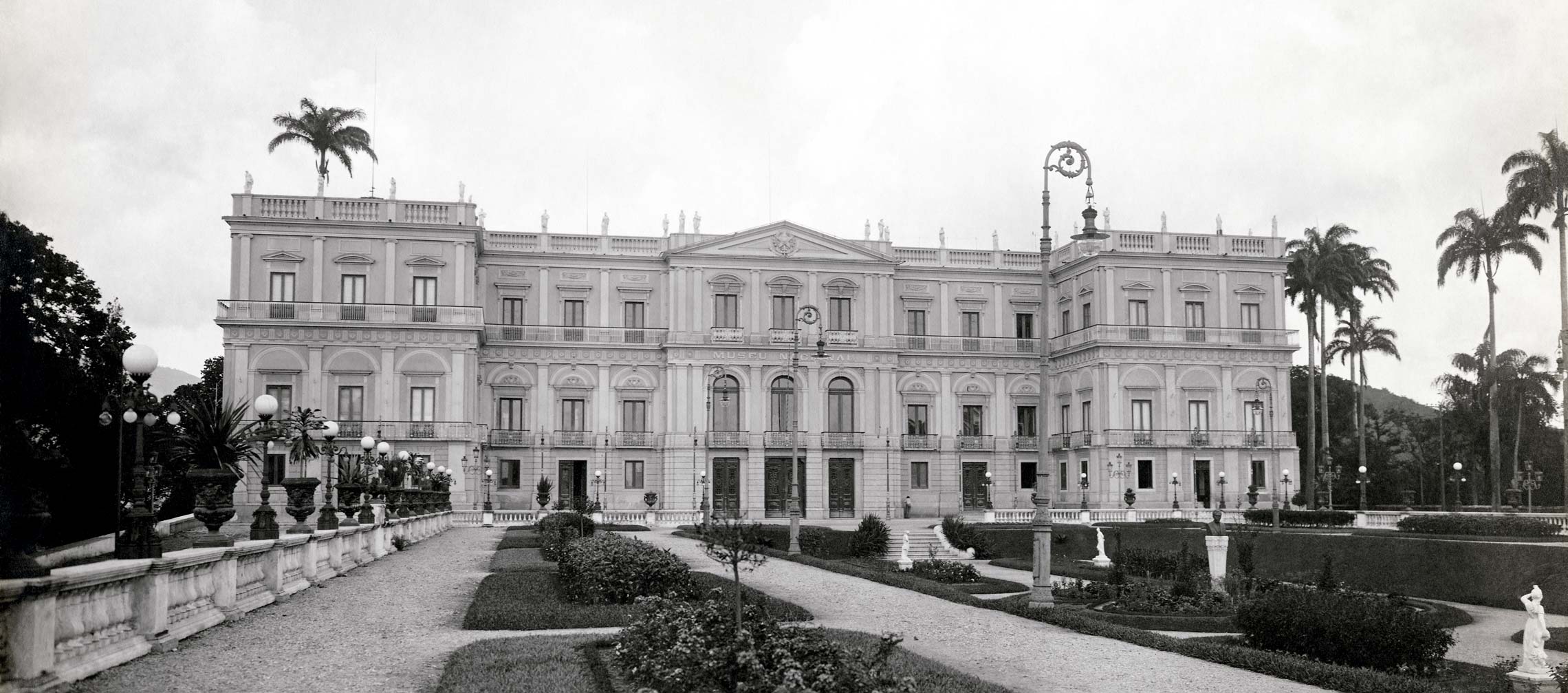During a visit to the French Academy of Sciences in Paris, in mid-1886, Dom Pedro II was told about a large meteorite lying in a streambed in the sertão (badlands) region of Bahia. The rock had been found in 1784 by a boy named Joaquim da Motta Botelho, who spotted it as he herded cattle in an area near the present-day town of Monte Santo. News of the finding had soon reached Rodrigo José de Meneses e Castro, governor of the then Captaincy of Bahia, who arranged for it to be transported to Salvador. The plan was to set the meteorite on an ox-cart pulled by several pairs of oxen and haul it to the state capital. But the cart collapsed under the weight of the 5-metric-ton space rock, sending it tumbling down into the dry Bendegó streambed, 180 meters from where it was originally found.
It remained there for another century. When he learned about the meteorite, the emperor organized a commission of engineers to relocate it to Rio de Janeiro. The operation was highly complex and involved the use of a specially built cart running on rails and pulled by teams of oxen. The trek lasted 126 days, with the meteorite arriving in Salvador on May 22, 1888. On June 1, it was boarded onto a steamship bound for Recife. From there, the vessel sailed to Rio, arriving in June 15. The rock was delivered to the Court’s Navy Arsenal for investigation. When the examination was completed, it was taken to the National Museum, where it was exhibited just outside the entrance.
The Bendegó meteorite was among the objects left virtually unscathed by the fire that destroyed Brazil’s National Museum and much of its collection on September 2. Alongside the space rock, the institution had, over the course of two centuries, amassed more than 20 million items brought from expeditions. The collection was organized in sections that provided material for research in fields such as anthropology, botany, entomology, and paleontology.
The museum was founded by Dom João VI (1767–1826) in June 1818, then as the Royal Museum, at a time when interest in natural history had been heightened by the coming of European naturalists to map out the territory, prospect for plants and minerals, and disseminate new farming techniques. It traces its roots, however, to the House of Natural History, created in 1784 under viceroy Luis de Vasconcelos e Souza (1742–1809). Popularly known as “Casa dos Pássaros” (House of the Birds)—because of the mounted birds it contained—the museum was originally housed in a building at Avenida Passos, in downtown Rio de Janeiro, as an arm of the Lisbon Museum of Natural History, in Portugal, to which were sent natural specimen and indigenous adornments collected in Brazil.
The museum functioned there for nearly three decades. “With the arrival of the royal family, there was no longer a need for intermediate storage of natural objects bound for Portugal, so the museum became defunct in 1813,” says historian Maria Margaret Lopes, a professor in the Inter-University Graduate Program in Museology at the University of São Paulo’s Museum of Archaeology an Ethnology (MAE-USP). “The collection was moved to the War Arsenal, where it remained until the creation of the Royal Museum.”
The Portuguese crown had long taken an interest in learning about the natural wealth of its colony. The New World also drew interest from European scientists and artists. “After archduchess Maria Leopoldina married crown prince Dom Pedro I, the future emperor of Brazil, plans were made for what became known as the Austrian Expedition, which brought naturalists and artists to Brazil to survey and document species and landscapes unique to the country’s biodiversity,” says Lopes. Among them were zoologist Johann Baptist von Spix (1781–1826) and botanist Carl Friedrich von Martius (1794–1868), who in 1817 embarked on a journey inland on an expedition that provided material for Flora brasiliensis, a book that revealed the features of Brazilian plants to the Old World.
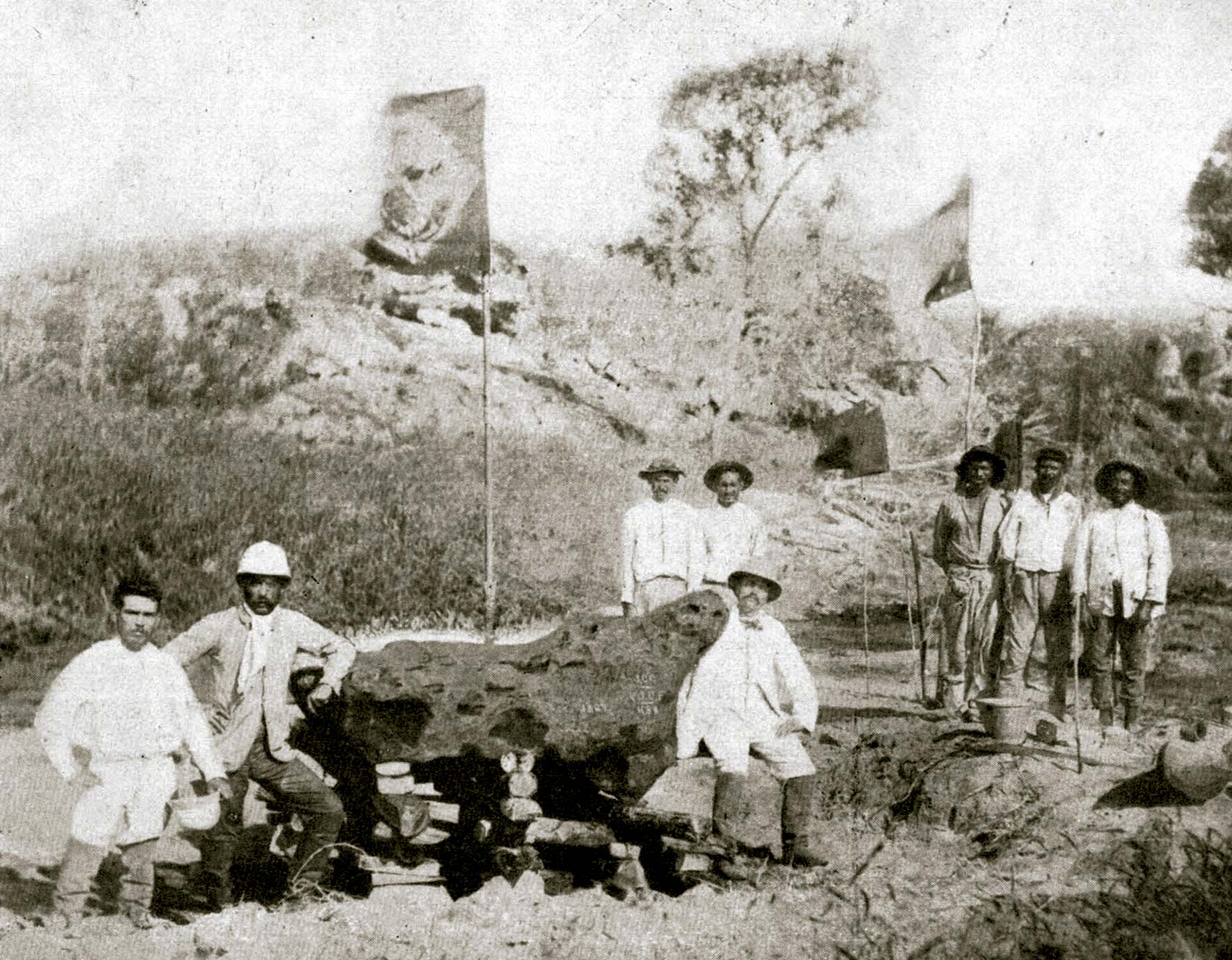
Wikimedia Commons
Engineers posing next to the Bendegó meteorite in the streambed of the creek from which it takes its name, in the sertão region of Bahia, 1887Wikimedia CommonsHaving an institution in the country in which to store and study its natural wealth had become indispensable. Modeled after European natural history museums, the Royal Museum had scientific collections, libraries, laboratories, and exhibitions. It was established in an old house in Campo de Sant’Anna, downtown Rio. Besides the collection from the defunct House of Natural History, the museum also housed a collection of rare minerals brought by the royal family and organized and classified by the German mineralogist Abraham Werner (1749–1817). “The Royal Museum was created as a colonial institution, a center for receiving and cataloging the natural treasures brought from Brazil’s provinces,” notes the historian.
In October 1821 the museum was opened to the general public, and thereafter continued to grow. Between 1822 and 1823, José Bonifácio de Andrada e Silva (1763–1838), Minister of the Interior and of Foreigner Affairs under Pedro I, convinced foreign naturalists to part with items collected during their expeditions in exchange for support for their travels. Among these were German naturalist Georg Heinrich von Langsdorff (1774–1852) and French botanist Auguste de Saint-Hilaire (1779–1853).
The second half of the nineteenth century saw a proliferation of science museums in Brazil
With the proclamation of independence, in September 1822, the institution was renamed the Imperial and National Museum. Dom Pedro II was a science enthusiast and lent much support to the museum. One of his most notable contributions was Egyptian priestess Sha-Amun-en-su’s sarcophagus, a gift he received from Isma’il Pasha, Khedive (viceroy) of Egypt, during his visit to the country in 1876. Pedro II kept it at his office until 1889, when it became part of the museum’s collection.
The museum’s natural-history collections were also expanded through donations from private benefactors. One such donation was made by Antônio Luis Patricio da Silva Manso, chief surgeon and inspector of the Military Hospital of the Province of Mato Grosso, who gave about 2,300 specimens of 266 plant species to the museum in 1823. July 1863 saw the creation of the museum’s Central Library—one of the largest libraries in Latin America specializing in anthropological and natural sciences. “The museum was seen as an example of excellence by researchers in Argentina, Chile, and Uruguay,” says Lopes.
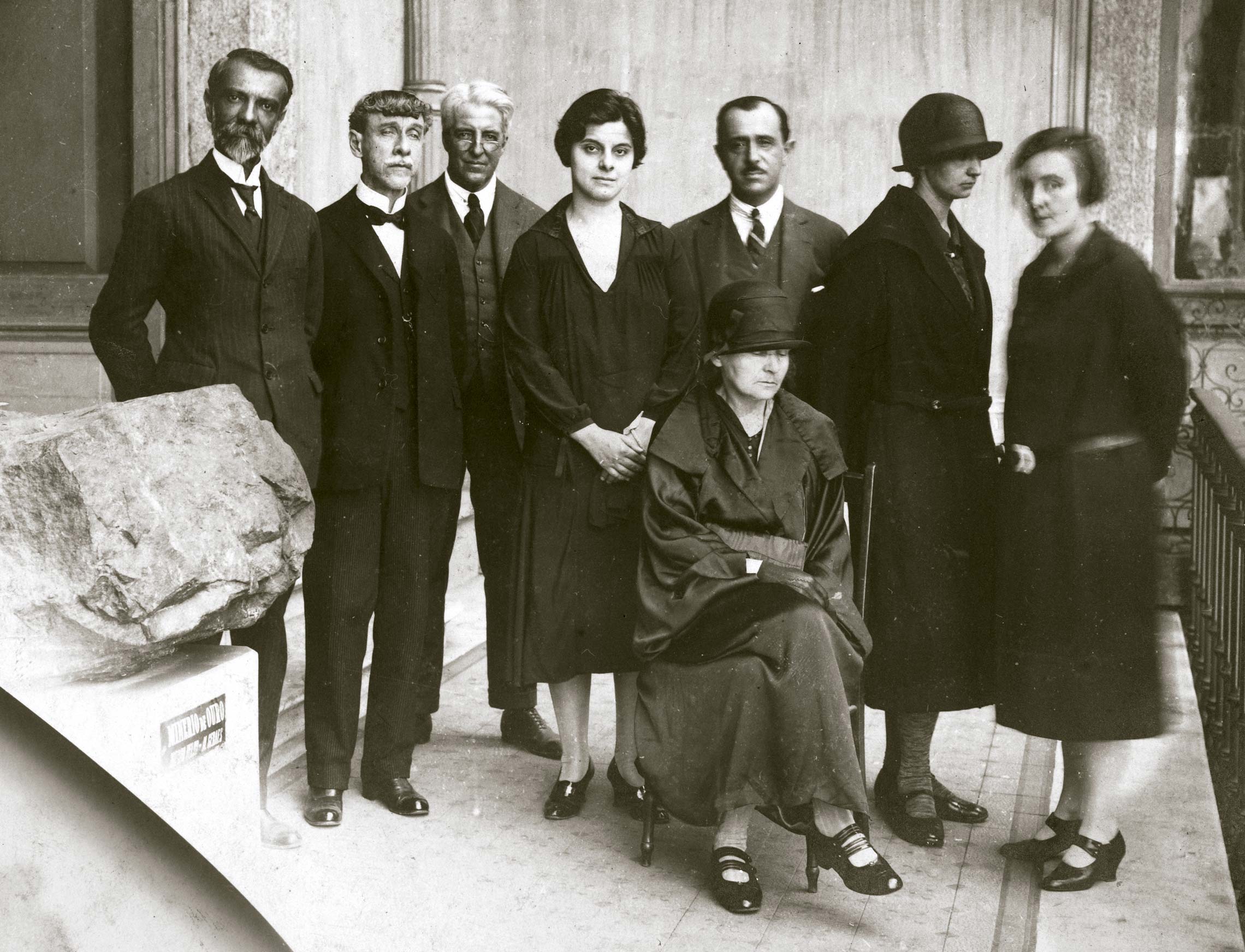
National Museum Archives
Polish chemist Marie Curie (seated) and her daughter, Irène Joliot-Curie (standing, wearing a hat), during a visit to the museum in August 1926National Museum ArchivesWith its subject-matter departments, including botany, zoology, geology, and ethnography, the Imperial and National Museum supported research that helped to develop the natural sciences in Brazil. In the second half of the nineteenth century the museum played an increasingly important role as an advisory body to the Empire on research in geology, mineralogy, and other fields. Its different departments and laboratories were used to examine samples brought from across Brazil, including coal, minerals, plants, animals, human skeletons, and the fossilized bones of enormous, unknown mammals.
Heyday
Under botanist Ladislau de Souza Mello Netto (1838–1894) as director, between 1876 and 1893, the National Museum saw what many researchers regard as its heyday. Mello Netto oversaw an extensive renovation at the museum, reorganizing its already voluminous collections into new sections by discipline, mirroring developments in scientific thought at the time. Other reforms he undertook were based in part on criticisms made by zoologist and geologist Louis Agassiz (1807–1873), director of the Museum of Comparative Zoology at Harvard University, during his time in Brazil leading the Thayer Expedition, from 1865 to 1866.
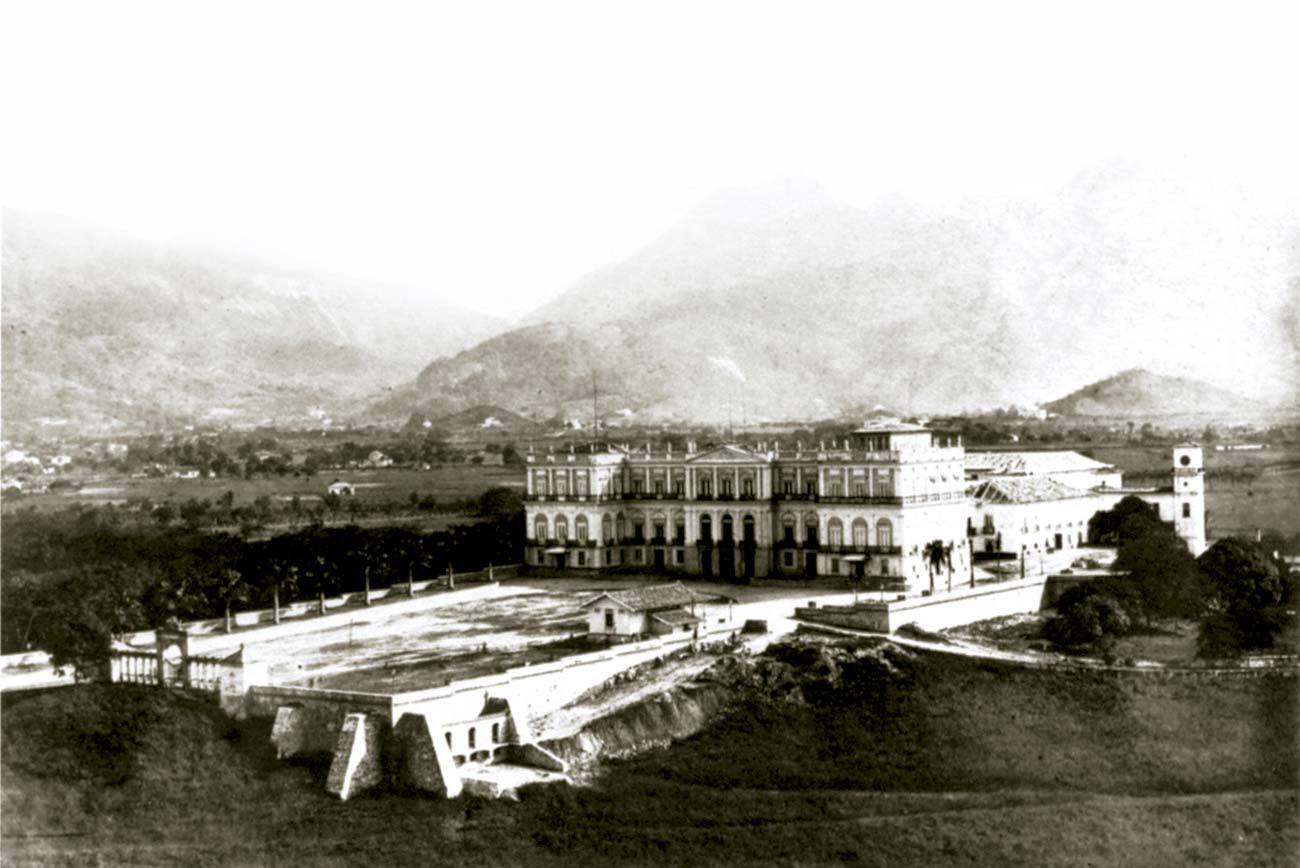
National Museum Archives
The São Cristóvão Palace in 1862, before it became home to the museumNational Museum ArchivesAgassiz visited the National Museum and reported that the institution suffered from a lack of funding to maintain the collection. In his book, A Journey in Brazil, written in 1868, he complains that the collections had been allowed “to remain for years in their present condition, without additions or improvements. The mounted animals, mammalia, and birds are faded; and the fishes, with the exception of a few beautifully stuffed specimens from the Amazons, give no idea of the variety to be found in the Brazilian waters.” In addition to their scientific curatorship of the collections, Mello Netto instructed the directors of each section to teach courses in their fields of research and to publish the results of their work in Archivos do Museu Nacional (National Museum archives), a journal that published research findings and news about museum sciences.
Organizing the Brazilian Anthropological Exhibition of 1882, the most important scientific exhibition in nineteenth-century Brazil, gave Mello Netto the experience to participate in another major exhibition, the Exposition Universelle of 1889, in Paris. He actively campaigned for more funding for the museum and invited foreigners visiting the country to attend conferences, participate in field trips, and work at the institution, including such names as the Canadian-American geologist Charles Hartt (1840–1878), who organized the Geological Commission of the Empire, the American geologist Orville Derby (1851–1915), who headed the geological survey in São Paulo, the Swiss-German naturalist Emílio Goeldi (1859–1917), and the German naturalist Hermann von Ihering (1850–1930); the latter two later headed museums in respectively Belém (Pará State), and São Paulo.
Science museums in Brazil
“The success and prestige of the National Museum helped to generate interest in the natural sciences in Brazil,” says historian Zita Possamai, a professor in the Graduate Program in Museology and Heritage at the Federal University of Rio Grande do Sul (UFRGS), in Porto Alegre. “The second half of the nineteenth century saw a proliferation of science museums throughout Brazil.” In 1866, the Philomathic Society of Pará was created in Belém, later becoming the Emílio Goeldi Museum of Pará, in 1871. In 1876, the Paranaense Museum was founded by the Philomathic Society of Curitiba. In 1894 the Museum of the Bahia Institute of Geography and History was opened. That same year, plans were made for the founding of the Paulista Museum.
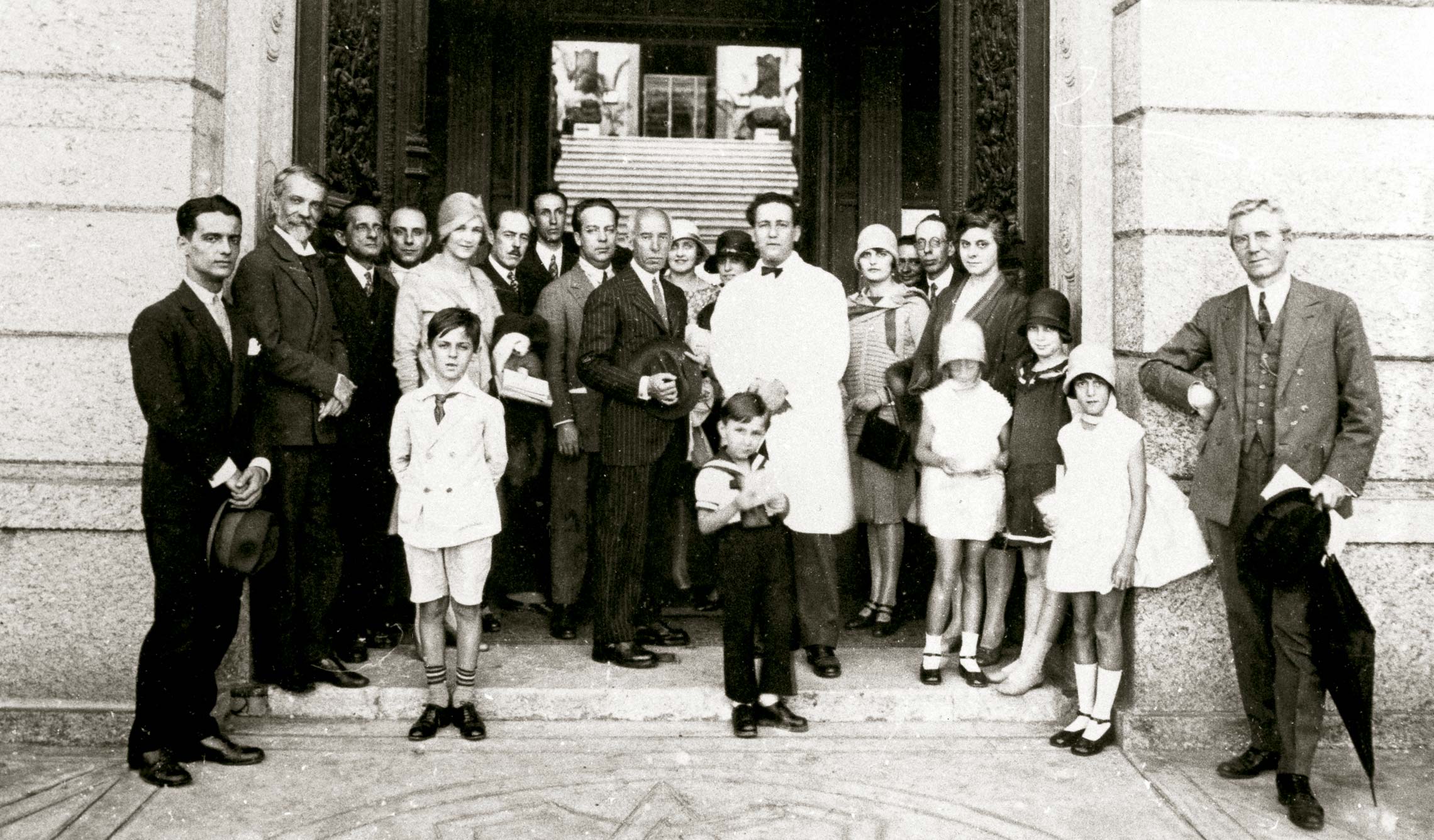
National Museum Archive
Alberto Santos Dumont (center, hat in hand) visited the museum in July 1928. At his side (wearing a white coat) is the then director, anthropologist Edgard Roquette-PintoNational Museum ArchiveFollowing the proclamation of the Republic and the exile of the imperial family, in 1889 the National Museum was relocated to the São Cristóvão Palace at Quinta da Boa Vista. The permanent exhibitions at the museum’s new home were opened to the public in May 1900. In the following decades, the institution became increasingly prolific in international scientific collaboration, publishing, and public education. Years later, under the directorship of anthropologist and radio personality Edgar Roquette-Pinto (1884–1954), the museum further enhanced its role in education as a means of building Brazil’s science capacity and training future generations. Roquette-Pinto saw education as a way to bring about change and transformation in Brazil.
It was also during his tenure that the museum entertained some of the notable personalities on the global science scene at the time, among them the German physicist Albert Einstein (1879–1955), who visited the museum during a trip to South America. Polish chemist Marie Curie (1867–1934) and her daughter, Irene Joliot-Curie (1897–1956), visited in July the following year, stopping on their way to Belo Horizonte for a conference at the University of Minas Gerais on radioactivity and its potential applications in medicine.
The National Museum’s success and prestige helped to generate interest in the natural sciences in Brazil
In the 1930s, the newly created Inter-University Graduate Program in Museology at MAE-USP provided an added stimulus to the museum, according to historian Mariana Sombrio. Government concerns over protecting national heritage were increasing, leading in 1933 to the establishment of the Artistic and Scientific Expedition Oversight Board. “The board barred any botanical, zoological, mineralogical or paleontological specimens from leaving the country unless similar specimens were available at scientific institutions run by the Ministry of Agriculture or the National Museum,” the researcher explains. The board continued to function until 1968. During that period it received 451 applications, mostly from foreigners looking to undertake scientific and artistic expeditions to Brazil.
To enforce these rules, at least one Brazilian researcher, preferably from the National Museum, was required to be on the expedition. “This was so they could report to the authorities on what was being collected,” says Sombrio. This scrutiny was not always effective, however. Many objects were seized at customs offices just before being shipped overseas. “The museum benefited greatly from this policy, as many items either collected on the expeditions or confiscated in customs were added to its collection.”
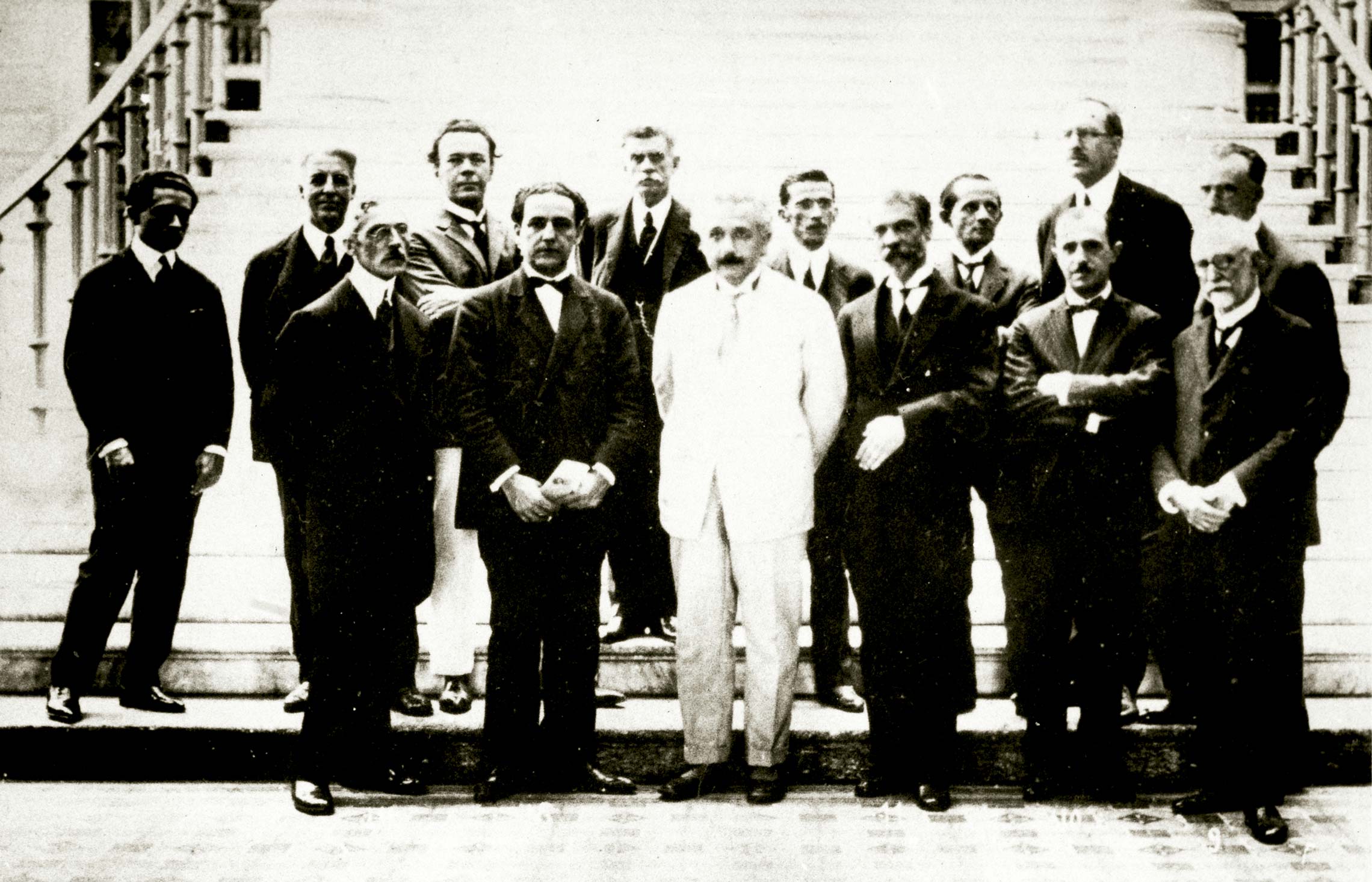
National Museum Archive
In May 1925, during a trip to South America, the German physicist Albert Einstein (dressed in white) used his time in Rio to visit the museumNational Museum ArchiveThe notion that the National Museum should serve the general public gained greater traction between 1937 and 1955 under anthropologist Heloisa Alberto Torres (1895–1977), the first woman to head the institution. She saw it as part of a comprehensive, national cultural framework. Following Torres’s appointment in 1937, she made anthropology into a scientific instrument for preserving Brazilian culture. But scientific museums in Brazil soon began to yield their status as “temples of science” to universities and research institutes. “Scientific knowledge had up until then been developed not in universities, but in museums,” Lopes explains. But as the natural sciences became increasingly specialized, and as experimental studies grew in importance, universities became the place for research, and museums a space for conserving collections.

National Museum Archive
Juscelino Kubitschek (dark suit, center) was one of the last presidents to visit the museum (1958)National Museum ArchiveTheir collections, however, were not forgotten. Beginning in the 1930s, museums were gradually incorporated into universities. In January 1946, for example, the National Museum came under the management of the University of Brazil, now the Federal University of Rio de Janeiro (UFRJ). Similarly, the Paulista Museum transferred its collection of zoology to the Museum of Zoology in the late 1930s, and both museums are now administered by USP. In the 1960s the National Museum began training researchers and created Brazil’s first graduate degree program in social anthropology, one of the best in the field, leveraging its extensive collection. In the field of botany, the museum created a master’s degree program in 1972 and a doctoral program—Rio de Janeiro’s first in this field—in 2001. In the years preceding the fire, visitor numbers had remained virtually stagnant. Around 180,000 people visited the institution in 2016, then 192,000 in 2017. As in most museums, only parts of the museum’s collections were exhibited to the public, among them plant and animal specimens of Brazilian biodiversity, mummies from Egypt, indigenous adornments, South American dinosaur skeletons, and the Bendegó meteorite, the largest found in Brazil to date.
Published in October 2018
Republish
